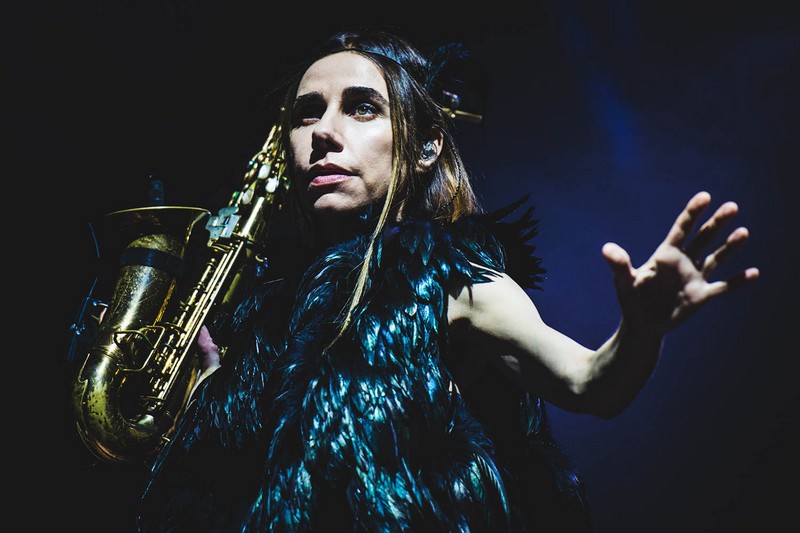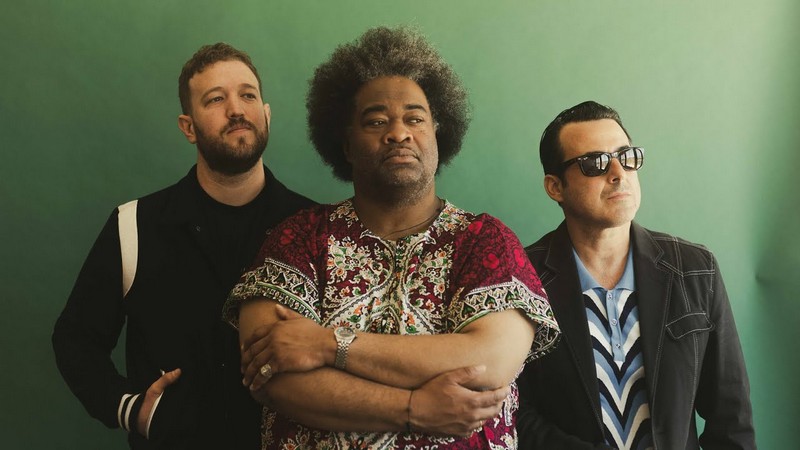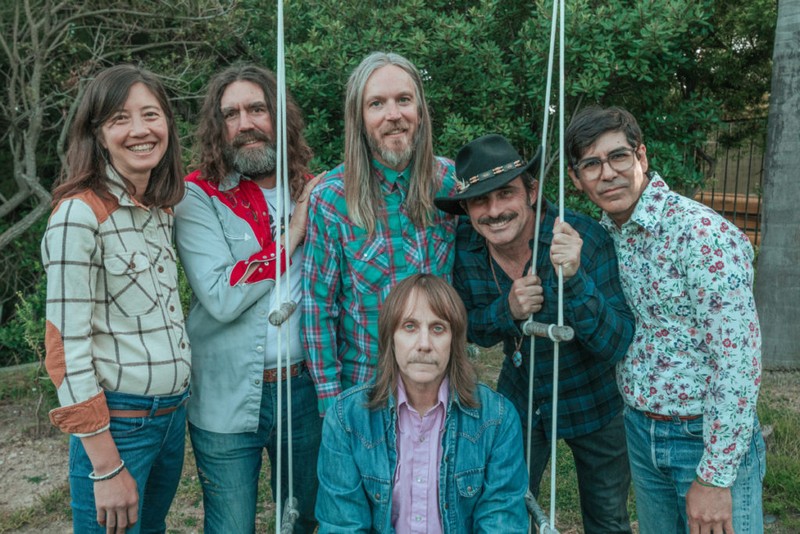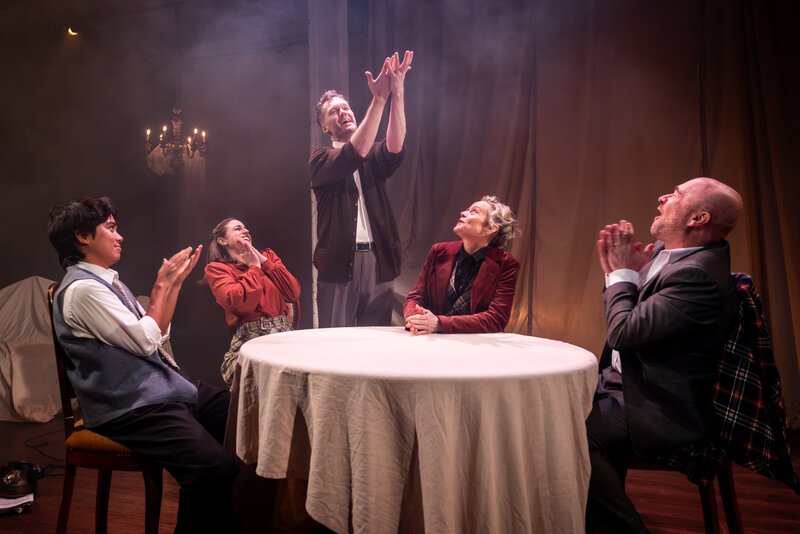 To indie and alternative rock fans, PJ Harvey is well-known for early aggressive art-rock albums delivered with punk intensity, and her later works for her socio/political commentary and insights. Few are aware that she’s an artistic polymath, a sculptor, painter, and poet as well as a singer/songwriter and multi-instrumentalist. While it’s been seven years since the release of The Hope Six Demolition Project, an artful musical discussion of the ups and downs of any urban renewal project, Harvey has been at the helm of two soundtrack releases, “All About Eve” in 2019 and for the fun, but dark Irish, 2022 Apple TV comedy series, “Bad Sisters,” and then also last year released a book of poetry, “Orlam,” which was reportedly eight years in the making. As it turns out, her new album I Inside the Old Year Dying, is based largely on the poetry and storytelling at the heart of her epic poem, which leans heavily on the language and dialect of Dorset, the English coastal county where Harvey grew up.
To indie and alternative rock fans, PJ Harvey is well-known for early aggressive art-rock albums delivered with punk intensity, and her later works for her socio/political commentary and insights. Few are aware that she’s an artistic polymath, a sculptor, painter, and poet as well as a singer/songwriter and multi-instrumentalist. While it’s been seven years since the release of The Hope Six Demolition Project, an artful musical discussion of the ups and downs of any urban renewal project, Harvey has been at the helm of two soundtrack releases, “All About Eve” in 2019 and for the fun, but dark Irish, 2022 Apple TV comedy series, “Bad Sisters,” and then also last year released a book of poetry, “Orlam,” which was reportedly eight years in the making. As it turns out, her new album I Inside the Old Year Dying, is based largely on the poetry and storytelling at the heart of her epic poem, which leans heavily on the language and dialect of Dorset, the English coastal county where Harvey grew up.
Harvey told NPR in an interview posted this week that there had been some thought about putting “Orlam” on stage, so there had been some exploratory workshops where the poem was read aloud with actors Ben Whishaw and Colin Morgan, and Ian Rickson, a theater director. In the end, the theater aspect was abandoned, but Harvey went on to write the twelve songs, loosely related to her original poetry, over the course of three weeks, shaping the basic melodies with basic guitar or piano accompaniment. In the original epic poem, Harvey tells the story of a year in the life of a nine-year-old girl living is a small town surrounded by the glorious natural world, a mixture of human story-telling and larger mythic forces at play. Harvey’s lyrics follow the general direction of the poem’s narrative, while never directly focusing on the central character, Ira-Abel, herself, not even mentioning her name, even in a song like “Seem Like I” where she seems to sing the opening lines in the voice of her child heroine.
To bring these songs to full life, Harvey returned to her long-time collaborators, multi-instrumentalist John Parish and engineer/producer Flood, who’s worked with everyone from U2, Depeche Mode, and Nine Inch Nails, to Nick Cave and The Killers. Together, the artistic trio with a commitment to create a unique sonic space for these poetic extensions, and to not repeat sounds and song patterns from previous recordings, incorporated field recordings of community life and nature that had been slowed down or sped up, distorted and run through effects to develop the otherworldly sonic textures to approximate what Harvey described as the “ethereal and melancholic longing” she hoped to communicate. And she reported that both Flood and Parish worked with her on her vocals until she sang without falling back on to the “PJ Harvey” sound many would immediately recognize from previous recordings. As such, I Inside the Old Year Dying is surely an extension of the artful catalogue she’s developed, and yet it also feels very new and different.
But that otherworldliness isn’t just established by the over-driven sounds of musical instruments, their reverberations bleeding together indistinctly, or in Harvey’s varied, textured vocal delivery, but it’s also in the very language of her lyrics, drawn from the Dorset dialect, similar to Gaelic in some ways, and a bit like old Shakespearean English. In the opening “Prayer at the Gate,” her character asks the divine “am I worthy?/Speak your wordle to me.” She’s not referencing the daily word game many play on line, she’s using the Dorset word for “world.” In “Lwonesome Tonight,” she sings “Hark the zingen of the birds/Gurrel yearns yet to ungurrel,” and you don’t have to work too hard to uncode the story she’s telling. It may be a story told in no particular time, as much an ancient time as it might be current, yet in that same song her prayer asks, “Are you Elvis? Are you God?/Jesus sent to win my trust?/‘Love me Tender,’ are her words/As I’ve loved you, so you must.” So there are actual correlations to our own experience, even if she’s referring to sheep scattered across the hillside when she sings of “Bedraggled angels blethered/Across Eleven Acres.”
While on early listens the distorted sounds seemed to dominate proving challenging, but on repeat you begin to sort out guitars, piano, and keyboards, while the drums are generally more distinct. In time, “Lwonesome Tonight” reveals itself to be more of a singer/songwriter bluesy folk song with sonic enhancements, while the crisp, acoustic guitar chording at the heart of the album’s title track provides a welcome anchor for conventional music listeners. But then as if to reward listeners who make it all the way to the final track, “A Noiseless Noise,” proves to be the opposite of what the title suggests, and opens up to a full-on acoustic punk rant, with electric feedback, fueling the tracks emotional release in the admonition to “come away, love,” repeated three times, and the final blessing of homecoming: “go home now, love/leave your wandering.” Some melodies float through sound like folk melodies, familiar yet also at odds with expectations.
Given the numerous words here requiring translation, at first I Inside the Old Year Dying can feel like a high schoolers French class homework, but as you become more accustomed to the dialect, the words, melodies, and music feel more of a piece. As is often true of Harvey’s work, there are dark, mysterious powers at work here and there, but also there’s a warm, human heart that dares to hope and wants to attempt love. In “A Child’s Question, August,” Whishaw joins her to sing together a Gospel message delivered earlier by Elvis/Jesus. “Help me dunnick, drush and dove/‘Love Me Tender,’ tender love.” Like a lot of fine art, this collection from Harvey and her collaborators gives up more and more to be grasped and appreciated as you become more familiar with the work. PJ Harvey has never aimed for the lowest common denominator, she’s always been willing to go deeper, face the darkness, name the nameless, and cut a new path worthy for those who would come along for the journey eager to see the world through new eyes, hear the songs with new ears. The artful, poetic work of I Inside the Old Year Dying doesn’t disappoint.
Brian Q. Newcomb
For more of Brian Q. Newcomb’s music reviews, check out The Fire Note
Other reviews you might enjoy:
- Expert in a Dying Field (The Beths) – music review
- The Thread That Keeps Us by Calexico – music review
- Echo The Diamond (Margaret Glaspy) – music review

The Fire Note started to create a simple place that could showcase records that we liked. Nothing more, nothing less. The focus has always been about the album and the experience that a great record creates. The Fire Note Webzine builds on this idea by offering an array of content that is all about the enjoyment of music, its pulse and energizing attitude.





